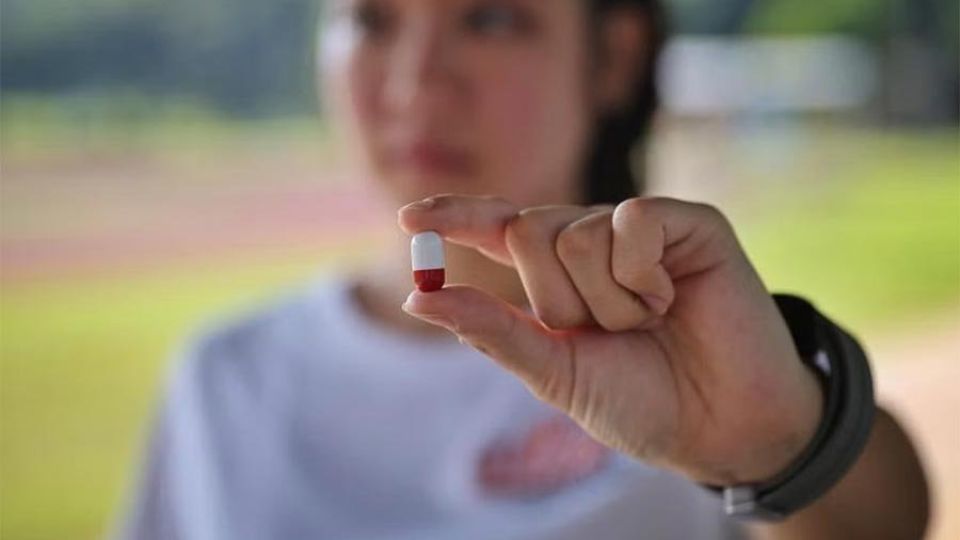November 24, 2023
SINGAPORE – Runners are swallowing data-tracking pills that measure their internal body temperatures and beam the readings to a smartwatch in real time, with the information being used in a project to develop improved sensors.
The electronic pill is designed to measure a runner’s core temperature – the most accurate indicator of whether a person is overheating under strenuous conditions.
When large enough, a database of runners’ temperatures will help smart wearables more accurately detect a user’s core temperature even when worn on the skin, and flag when he is at risk of heat injury.
Beyond runners, the study could also help to monitor the vital signs of high-risk groups, such as seniors, outdoor workers and firefighters, to boost their safety.
The pills are part of research being carried out by the Heat Resilience and Performance Centre at the National University of Singapore’s (NUS) Yong Loo Lin School of Medicine to explore uses of wearables that can estimate heat strain more accurately.
Speaking to The Straits Times, centre director Jason Lee said: “Heat stress is a key showstopper for endurance performance, and can cause heat injury, especially to people in high-risk groups.”
This is especially true in Singapore, where people are subject to high heat and humidity, he added.
“We want to develop a system that can signal to people who are nearing their personal thermal thresholds for safety, so we need to collect all these physiological inputs to see how they correlate,” said Associate Professor Lee.
Developed by French medical company BodyCap, the pill houses a small battery, a temperature sensor and a transmitter to communicate the data.
It is approved by the United States Food and Drug Administration for clinical and research purposes, and is used by the military and sports sectors for performance monitoring, among other tests. It typically passes out of the user’s system in two days.
Several thousand pills have been used in NUS’ tests during marathons here and other scenarios.
The readings are reflected on smartwatches like the Samsung Galaxy Watch6, which also tracks distance and speed and serves as a heart rate monitor.
The team also uses other sensors to measure a runner’s heart rate and gait to study how these readings fluctuate under high heat stress.
The databases will need to be tested against other scenarios to accurately reflect the body’s sensitivity to different environments, said Prof Lee. For example, athletes can be motivated to push themselves despite the heat, as compared with seniors who stay indoors and are more sensitive to heat injury.
“It’s not a one-size-fits-all study,” said Prof Lee.
The tool is also helpful for jobs outdoors, Mr Tan said, adding: “When deployed in work environments with potential workplace safety risks, our wearable solutions can facilitate swift on-site intervention, potentially saving lives.”
Prof Lee said such devices can be helpful for seniors and outdoor workers to monitor their safety in real time and deliver prompt medical attention if they are at risk of heat injury.
“Eventually, we want a non-invasive way to keep track of a person’s temperature,” he said. “But based on our tests on what’s available in the market, there is not one that can reliably track a user’s core temperature.”


